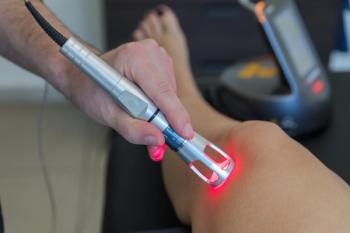
New and Emerging Treatments for Atopic Dermatitis
Matthew Zirwas, MD, FAAD, associate professor of dermatology at Ohio University in Athens, Ohio provides updates on treatment options for AD at the 2022 SDPA Fall Conference.
At the 2022 Society of Dermatology Physician Assistants Conference in Miami, Florida, Matthew Zirwas, MD, gave an overview of the various medications used to treat atopic dermatitis (AD). In his session, Zirwas focused on several popular medications and treatments, including emollients, topical corticosteroids, and Janus kinase (JAK) inhibitors, how they differ, and risks associated with them.
Atopic dermatitis is one of the most common chronic inflammatory skin diseases in industrialized nations, affecting an estimated 12% of children and 7.2% of adults in the US. Although AD is most often diagnosed in childhood, an estimated one in four adults with the disease experience the onset of initial symptoms after the age of 18.
Moderate to severe AD needs to be controlled not only for patient comfort, but to address serious infection risks and there are several medications typically used in treating the condition.
Dupilumab is an interleukin 4 (IL-4) receptor that helps block internal inflammation sources and is a common treatment for uncontrolled moderate-to-severe cases of AD. Zirwas said it’s the oldest drug, and has the most clinical experience, for this skin condition. Clinical trials show that adults who receive biweekly injections have significantly improved outcomes. It typically starts to show a decrease in symptoms in 2 to 4 weeks.
Recently, dupilumab was approved by the US Food and Drug Administration for children aged 6 months to 5 years with moderate-to-severe AD. "This is absolutely life-changing, the way it affects kids and families", Zirwas commented. It is well tolerated and shows an acceptable safety profile, similar to results in older children and adults.
Another known therapy for AD is tralokinumab; a human monoclonal antibody that targets the cytokine interleukin 13 (IL-13). Studies show it to be less effective than dupilumab in the short term but has similar efficacy in the long term. Tralokinumab outperformed placebo in safety over time with no significant changes or adverse effects.
Janus kinase (JAK) inhibitors are part of a class of medicines called disease-modifying antirheumatic drugs (DMARDS). They work by blocking the overactive JAK pathways and limiting cytokines, associated with AD symptoms. Zirwas said they are the best option for patients suffering from other conditions, such as rheumatoid arthritis, psoriasis, and seborrheic dermatitis. Safety concerns associated with JAK inhibitors primarily focus on immunosuppression and blood clots, both venous and arterial.
Zirwas recommends clinicians practice shared decision-making when it comes to creating a patient treatment plan, however, he said providing patients with more than 2 options can lead to confusion. It comes down to how quickly a patient wants to see relief, what adverse effects they’re willing to risk, and what dosage they’re comfortable with.
Reference
Zirwas, M. New and emerging treatments for atopic dermatitis. Presented at the 2022 Society of Dermatology Physician Assistants Conference; November 17-20, 2022. Miami, Florida.
Newsletter
Like what you’re reading? Subscribe to Dermatology Times for weekly updates on therapies, innovations, and real-world practice tips.
















